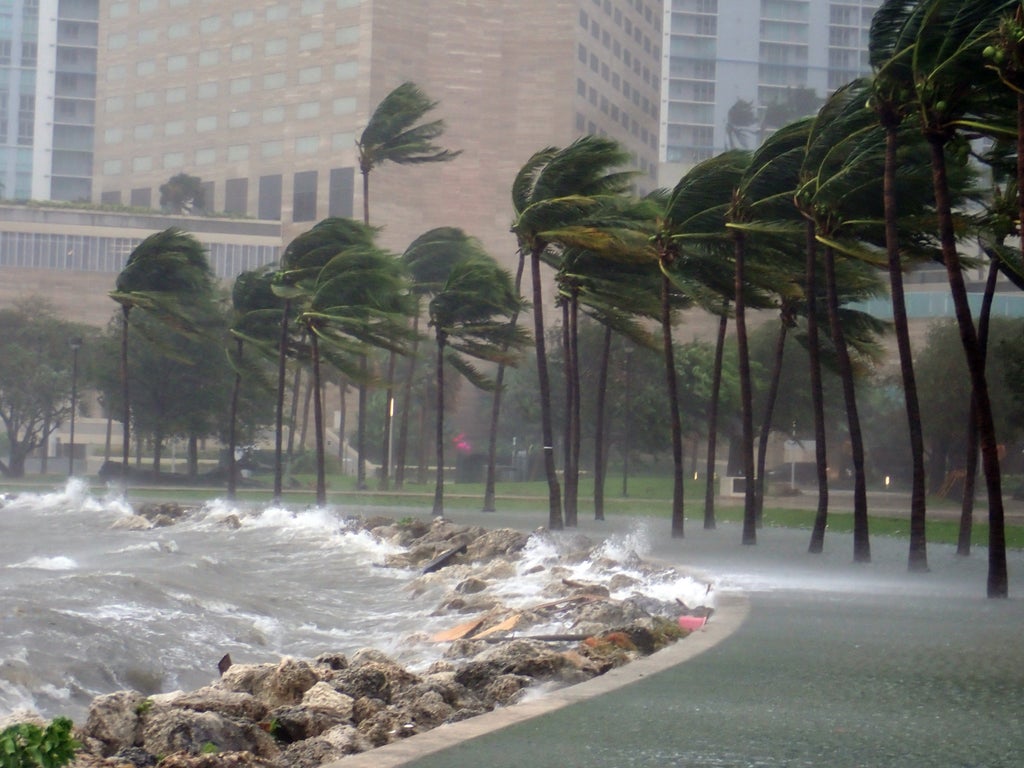Overview
- Soaring insurance costs in California and Florida are just the canaries in the coal mine. Cotality data shows it’s only a matter of time before other states begin to feel the strain.
- As affordability erodes, homeowners are amplifying the insurance crisis in the country’s riskiest areas by limiting or foregoing coverage altogether.
- Stakeholders will need to untangle current regulatory, affordability, and technological challenges to create a more sustainable system.
The ongoing U.S. insurance crisis was never a question of if; it was a matter of when.
A perfect storm of environmental risk, migration patterns, and complex regulations has made coverage either unaffordable or unavailable for millions of homeowners. Now, states like Texas face the same fate as Florida and California, where insurance is either wildly unaffordable or unavailable — or both. The crisis has arrived. The question is who gets left without a safety net.
The accessibility of property insurance forces many people to make difficult decisions, especially in hazard-prone states like Florida and California. For some, the rising costs of insurance, or no insurance options at all, means moving out of their dream home because it’s too expensive to rebuild if a hurricane hits or a wildfire sweeps through. For others, inaccessible insurance prevents home ownership completely.
The average cost of homeowners’ insurance in the United States jumped 74% over the last 15 years. In some hazard-prone areas, due to insurer withdrawals, adequate coverage isn’t available.
"The difference between insured and uninsured loss, also known as the protection gap, is a dark storm on the horizon,” said Tom Larsen, Senior Director of Content Strategy at Cotality. “When the storm hits — and it eventually will — the lack of funds to restore homes and businesses will at best result in a diminished quality of life and business operation, and at worst lead to a loss of relevance of the insurance policy to consumers.”
Cotality examined the intersection of environmental, economic, technological, and regulatory factors shaping today’s insurance crisis, finding that California and Florida are just canaries in the coal mine. Experts identified trends that indicate the insurance gap is threatening the security of homeownership in some of the country’s largest economic powerhouses.
Barriers to insurability are at the eye of the storm
The increase in frequency and severity of a multitude of perils across the U.S. is undoubtedly a driver of the yawning gap in American insurance coverage.
Cotality data shows that severe convective storms in the last couple of years have caused historic destruction. In 2024, storms accompanied by damaging hail occurred on 133 days — surpassing the 20-year average. That same year also saw more tornadoes and severe wind reports than average, according to a Cotality findings.
Days of hail exceeds 20-year average
Data source: Cotality, 2025
Over the same period, the U.S. saw an above-average Atlantic hurricane season, with 14 named storms turning into three major hurricanes in 2024. Cotality estimated that Hurricane Helene, the most destructive hurricane of the season, caused between $30.5 billion and $47.5 billion in total losses.
The environment isn’t causing this destruction in isolation, though. The current insurance crisis is fueled by a confluence of factors that have gained momentum over the last decade.
The post-pandemic rise in remote work has driven many corporate workers to relocate to more affordable and geographically desirable locations. This trend substantially increases risk exposure, especially considering that not only are more people flocking to picturesque yet economical areas — coastal communities and new neighborhoods in the Wildland Urban Interface have been particular alluring — but they’ve also been building larger, more expensive properties when they get there.
“It’s two-fold; there are more people with more expensive homes in areas of historically high catastrophe risk, so the risk exposure increases exponentially,” said Cotality Chief Actuary Howard Kunst. “A common scenario is that people get stuck in situations where they can’t afford their insurance premiums, or they are reasonable in the beginning and then increase past the point of being affordable.”
Compounding the increasing insurance expense is the lingering economic uncertainty triggered by post-pandemic inflation.
To ease financial pressure, many homeowners scale back their insurance coverage or eliminate it altogether, opting to roll the dice in one of the highest stakes environments imaginable.
Those stakes are high not only for homeowners but insurers as well.
"In theory, insurers can adjust premiums to account for rising catastrophic losses, risk concentration in hazard-prone areas, and inflation-driven construction costs,” said Pete Carroll, Cotality's EVP of Public Policy and Industry Relations. “However, state regulations — especially in high-risk states — too often impose price caps, lengthy rate filing approval processes, restrictions on forward-looking risk models, and bans on passing reinsurance costs to policyholders. These constraints make it challenging for insurers to price risk accurately and can discourage them from operating in these states."
It’s understandable why insurers leave certain states.
“With catastrophe costs at historically high levels and reconstruction costs continuing to climb, we implemented a pause on writing new homeowners policies to more effectively manage our risk exposure,” Farmers said in a statement, as reported by The Miami Herald. In 2023, Farmers Insurance was just one of the insurance companies to stop writing new policies and renewals in Florida.
Similarly, at an out-of-cycle meeting with California Insurance Commissioner Ricardo Lara following the unpredictably destructive Los Angeles wildfires, California’s largest carrier, State Farm, confirmed that it would only halt non-renewals in the state if they could raise rates by at least 22%.
“Bottom line, it’s time,” State Farm CFO Mark Schwamberger told the Wall Street Journal. “We simply can’t handle this much exposure.”
And the pressure on premiums is positioned to get worse alongside exposure. Cotality data shows that homeowners in extremely risky areas — who generally already have high premiums — will see them increase markedly in the next five years.
Peril risk's influence on rebuild costs in 15 large U.S. cities
Data source: Cotality
It’s not just California and Florida that are facing an uphill battle. Even in the relatively small state of South Carolina, 14 insurers ran out of funds between 2020 and 2023. Texas too has had its struggles, with at least four major insurers halting coverage in 2024.
A Texas-sized triple-threat
To gain some control over the mounting insurability crisis, both Florida and California have enacted insurance reforms over the last five years.
Although the states are taking different approaches, both aim to create a more attractive market for insurers and are intended to provide more affordable options for property-owning residents. The intent is to help prevent reliance on state insurers of last resort — government-backed programs that typically offer less comprehensive coverage at a higher cost.
While Florida’s insurance reform focused on limiting insurance fraud, California’s Sustainable Insurance Strategy, which is currently rolling out, lifts restrictions on rate increases and allows California insurers to use predictive probabilistic models in rate-making processes.
Time will tell if these reforms will be enough moving forward, but for many, time is of the essence. Such is the case in Texas.
As the Lone Star State’s population is multiplying, so too are its natural disasters. While Florida is known for its hurricanes and California has become synonymous with wildfires, Texas is impacted by both — and then some.
Top 5 states impacted by hail in 2024
Data source: Cotality, 2025
In 2024, hailstorms hit Texas harder than any other state in the nation, with Cotality finding that over 180,000 homes felt the impacts of hail stones larger than 2 inches. With the average single-family reconstruction costs increasing 38.5% within five years, not only will insurers have a longer list of damaged homes, but the cost of that damage will be amplified.
It would be one thing if Texas just had to brace for hail, but the states’ residents must also steel themselves for flames: wildfire risk in central and western Texas exposes an additional $88.4 billion dollars of property to a moderate or greater risk of wildfire.
Then there are the hurricanes. Data from Cotality shows that there is a 1% chance every year that a hurricane will cause destruction to the tune of $33.9 billion in Harris County — the home of Houston, Texas — alone. Only two-thirds of that wind and storm surge loss would be insured.
The cost of hurricane damage
* These numbers represent a level of loss that has a 1% chance of occurrence in each region in any given year.
Data source: Cotality, 2025
This data suggests that as more residents flock to the state, it will only widen the insurance gap and leave homeowners, as well as state governments and economies, facing the possibility of insolvency as these tropical storms rack up progressively larger bills.
Unlike the Texas forecast, one thing is clear: states faced with growing weather risk alongside swelling populations must prioritize some level of industry reform to permanently shrink the insurance gap and protect sustainable homeownership.
Premiums are rising, protection is faltering
Responses to the insurance crisis seem only to exacerbate the problem as the economy shifts and natural disaster patterns alter at an accelerated pace. Despite stakeholders trying to untangle the situation that has led to the current status quo, regulators, insurers, and other members of this ecosystem aren’t fighting fire with fire.
Although the insurance ecosystem is operating in a modern environment, it remains stuck in another era — one where technology is largely misunderstood.
In part due to state restrictions, insurance providers and their restoration partners have been slow to adopt modern automation and artificial intelligence technologies, which would help them increase their capacity by relying on digital solutions to accurately process the reams of data necessary for making more proactive decisions.

In an industry where success hinges upon data-driven decision making, there are significant constraints around how to access and leverage data. It was only recently that the California Department of Insurance (CDI) allowed insurers to use predictive probabilistic data to set premium rates. But there is still room to expand and see the insurance landscape with greater precision. That precision begins by adopting advanced technologies like AI as tools.
However, there is still much caution around the use of AI, especially in legislative and regulatory environments where digital expertise is nascent and the rules for usage of digital solutions are being set. Concerns surrounding its use perpetuate its absence as a tool and limit its potential to respond to the insurance gap.
Greater access to these predictive analytics tools, which are increasingly AI-driven, would enable insurers to both more accurately assess and distribute risk so that no single carrier bears the brunt of any large-scale disaster.
Surveying the damage after Hurricane Milton
Mind the gap
Insurance is entering a new era that will be defined by a collective strategy to close the current insurance gap. If insurers, regulators, and other stakeholders fail to learn from the warning signs in Florida, California, and Texas, it could further entangle homeowners in an unsustainable network.
With the right tools the property insurance industry can devise creative, practical strategies to keep the insurance gap from blowing wide open in states like Texas and other states contending with booming populations and storms.














